Have you ever wondered whether heat protectant sprays were worth the effort and cost? Here’s the science behind how they protect your hair from heat styling damage!
Related Post: How do air-activated heat packs and eye masks work?
What damage occurs when you heat style hair?
Straighteners and curling irons heat your hair to somewhere between 95 and 170 °C. When your hair heats up above 130 °C (266 °F), a few types of damage occur:
- The pigments that give your hair its colour change (e.g. bleached hair goes brassy)
- The keratin proteins that give your hair its strength and elasticity break down
- The outer surface (cuticle) of the hair cracks and frays
- Moisture evaporates from the inside of the hair (and if your hair is wet, the steam will blast through your hair’s structure, destroying it as it leaves)
Related Post: Why You Should Never Straighten or Curl Wet Hair
Heat protectants claim to reduce this heat styling-related damage.
Related Post: Video: Fading Hair Dye With Low Damage
How do heat protecting products work?
Even though there are tons of different heat protectants on the market, only a few heat-protecting ingredients have been studied independently.
A 1998 study looked at the effects of PVP/DMAPA acrylates copolymer, quaternium 70 and hydrolyzed wheat protein on heat damage from a curling iron.
They found that all three resulted in 10-20% less damage. 1% solutions of all three were used in the study, so they seem to work at low concentrations.
The three ingredients are quite different, so it’s likely that they work in a general way – the researchers suggest that the three all form thin films on the hair surface which slows down heat conduction and distributes heat more evenly.
This means that the hair will heat up gently rather than suddenly, which causes less damage.
Many other ingredients can work this way to protect hair too – silicones, in particular, have low thermal conductivities, which means that when they’re coating hair fibres, they transfer heat slowly.
Amino silicones like silicone quaterniums in rinse-off conditioners can protect hair during heat treatments according to manufacturer studies, and it’s likely that silicones like dimethicone in spray-on products can too (though they might not coat the hair fibres as well).
Silicones also seal the hair cuticle and reduce moisture loss, which also helps protect from heat damage.
Since the mechanisms (lowering heat conduction, reducing water evaporation) by which these heat protectants work is so general, it’s likely that a lot of other ingredients will work to reduce heat damage too – they just haven’t been studied yet.
Keep in mind that heat protectants only reduce the amount of damage caused by heat styling. They can’t completely protect your hair – even the best results show about 50% heat protection at most.
Related Post: My Top (Mostly Cheap or Free) Haircare Hacks
Verdict on Heat Protectants
They work – in particular, ingredients like PVP/DMAPA acrylates copolymer, quaternium 70, hydrolyzed wheat protein and silicones (silicone quaterniums, dimethicone) reduce heat damage, most likely by evening out how the hair heats up.
However, they can’t insulate your hair from most of the damage, so you still need to minimise your hair’s exposure to heat styling!
Related Post: Silk for Skincare and Haircare (with video)
Here are a few Heat Protectant options:
- John Frieda Frizz Ease Heat Defeat Protective Styling Spray
- MORROCCANOIL Perfect Defense
- NOT YOUR MOTHER’S Beat The Heat Thermal Styling Spray
- JOHN FRIEDA Frizz Ease Frizz Ease Original Serum
- GHD Bodyguard Heat Protect Spray
- WELLA Eimi Thermal Image Heat Protection Spray
References
R McMullen & J Jachowicz, Thermal degradation of hair. II. Effect of selected polymers and surfactants (open access), J Cosmet Sci 1998, 49, 245-256
AL Gomes & SS Aguiar, Dow Corning Latin America, Silicones as Protective Agents in Thermal Treatments for Hair (open access)
YH Lim, CH Park & J Kim, Hair conditioning effect of amino silicone softeners in varied treatment conditions, Fibers and Polymers 2010, 11, 507-515
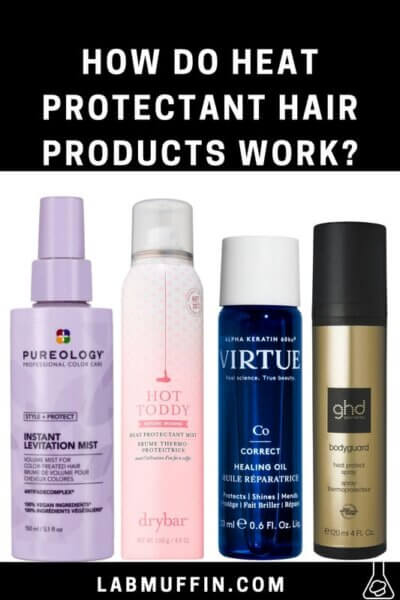


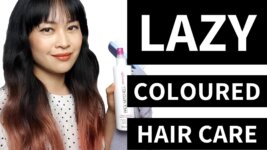
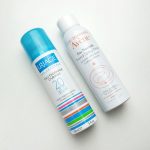
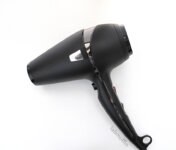
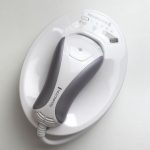
Are there particular brands that you recommend?
To be honest, I wasn’t sure they worked until I did the research for this post, so I haven’t really been paying attention to which ones seemed to work or not!
Nice article Michelle. I just started researching into heat protect-ants to possibly get something for my daughter.
I am new to your blog and am really enjoying the information.
I am surprised they actually work. I always thought it’s some kind of gimmick
Awesome information, thanks!!
Glad to know the mechanism behind their efficacy! I don’t heat style often but still use one just in case. Not sure I can commit to frequent styling but that seems to work in my (hair’s) favor !
GKhair ThermalStyleHer makes the best heat protectant in my opinion. Very effective against heat prior to styling. It seals moisture into the hair making each hair strand strong and healthy before blow drying. I’d highly recommend. 🙂 <3
What a well-researched and accurately referenced post! You did explain the science behind. Far too many manufacturer claims aren’t backed by real science. I agree that minimizing heat exposure is probably the best thing you can do for your hair. I’ll be sharing this post to my blog readers.
Hi Michelle!
Great article! Does this mean that we should let heat protectant dry before applying a flat/curling iron?
If it contains water, then yes, that would be safer!
Thank you, Michelle! 🙂
You say damage can occur when you heat your hair above 130°C. If one’s hair dryer didn’t reach that temperature in any setting (I think they never do, but I’m not sure), would you say it is safe not to use a hair protectant? Would you still recommend it for any reason?
Thanks a lot for summarizing the research.